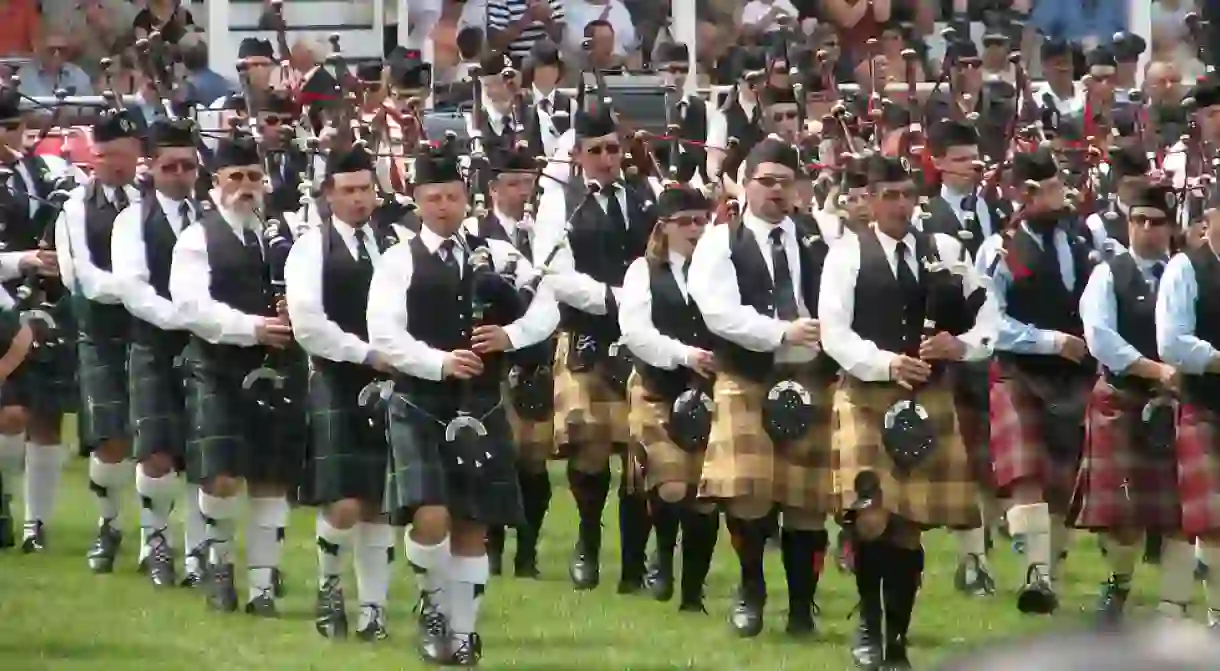The Highland Games Celebrate The Best Of Scotland

Every weekend each the summer, every facet of classic Scottish culture is celebrated in The Highland Games. The Games are a celebration of Scottish clans and heritage, and they seek to cement those ties at over 80 different Games taking place in various towns, cities, islands and even castle grounds across the country.
The Highland Games are steeped in history and are said to have begun in Ireland in 2000 BC before crossing into Scotland with the migrations of the Scotti to Argyll in the fourth and fifth centuries. The Games became more and more popular, especially after the creation of the most famous Highland Games event, The Braemar Gathering, which is the largest and most prestigious of all the Games. Not only are its guests royal (the Royal Family will be making an appearance), but so too are its origins. King Malcolm III called a gathering in 1040 in the hopes of finding the fastest and strongest soldiers and couriers for his fleet of men. In a combination of throwing, riding and jumping contests, he also added a foot race to the summit of Creag Choinnich, near Braemar for his chosen courier.

Unfortunately, the string of successful Games were put to a halt in 1746 after the implementation of the Act of Proscription in 1746, an Act that prohibited any showing of Scottish culture including that of dress, customs and gatherings of Scots. Thankfully, the repeal of this act 40 years later gave way to a new wave of Games to begin again, a cultural force that was given even more force in 1822 with the visit of George IV to Scotland. Since then, this historic moment has been immortalised in the Edinburgh landmarks of George Street and the George IV Bridge.

Since that time, the Games aim to celebrate Scottish culture and heritage in all of its glory – clans and their members originally went head-to-head with fierce competition in the Games – and are thought of as a general celebration of voracious Scottish culture. The Games typically include an eclectic mix of everything from dance, food, music and traditional sports. The clans still have the opportunity to battle it out however, in the much revered match of tug-of-war.
The much treasured sporting aspect of the Games is still alive and well. Nowadays, the strength and speed elements still manifest in sports such as the hammer throw and tossing the caber as well as a hill race and cycling contest to test the competitor’s stamina.

Not only do sports still play a major part in the Highland Games but dance competitions and musical spectacles also continue to feature. One of the most notable sights of the Games are the band of drummers and pipers that come to march and play together. The Games also hold solo competitions for pipers which see contenders playing a variety of musical styles including the Pibroch, the classic, slow style typically associated with the bagpipes. Highland dancing is also a classic event at the Highland Games and also include both group and solo competitions. Between the grand sound and sight of these cultural spectacles, the colours of traditional clan dress add an impressive element of majesty to the event, one that shouldn’t be missed.

The Highland Games’ influence has been such that similar events can be found all over the world to celebrate Scottish culture and heritage. The first non-Scotland Games took place in New York in 1836 before being picked up by San Francisco in 1866. There are now more than 200 annual games in the United States and Canada, not to mention New Zealand and Australia.














